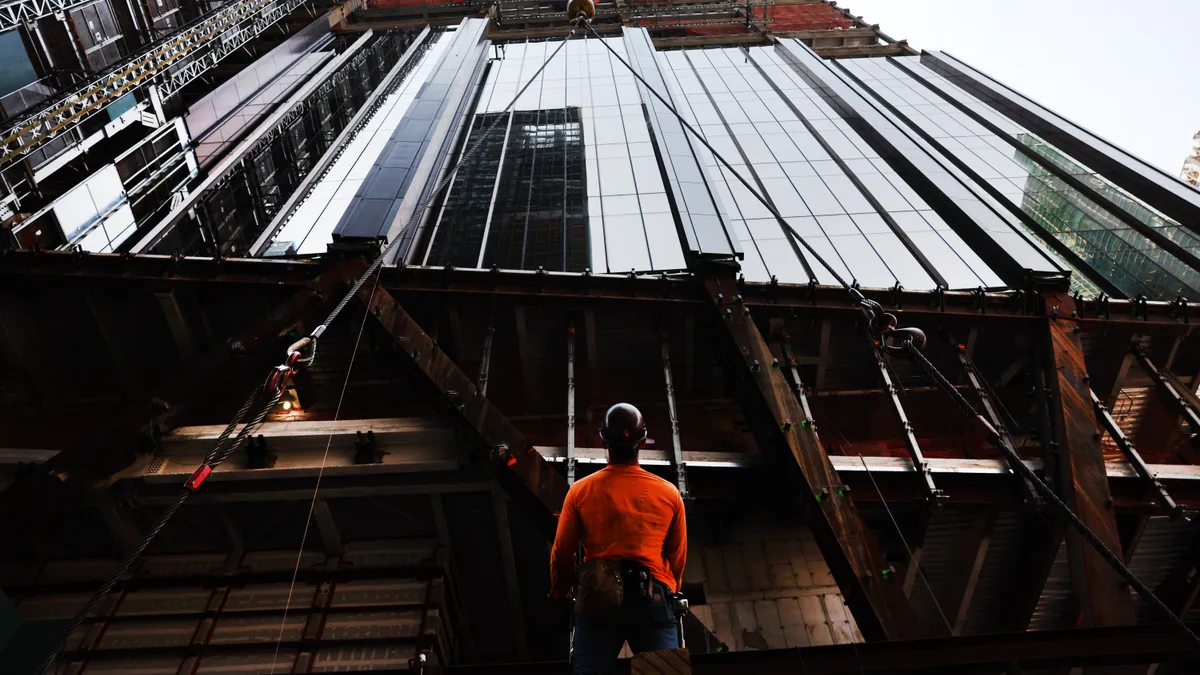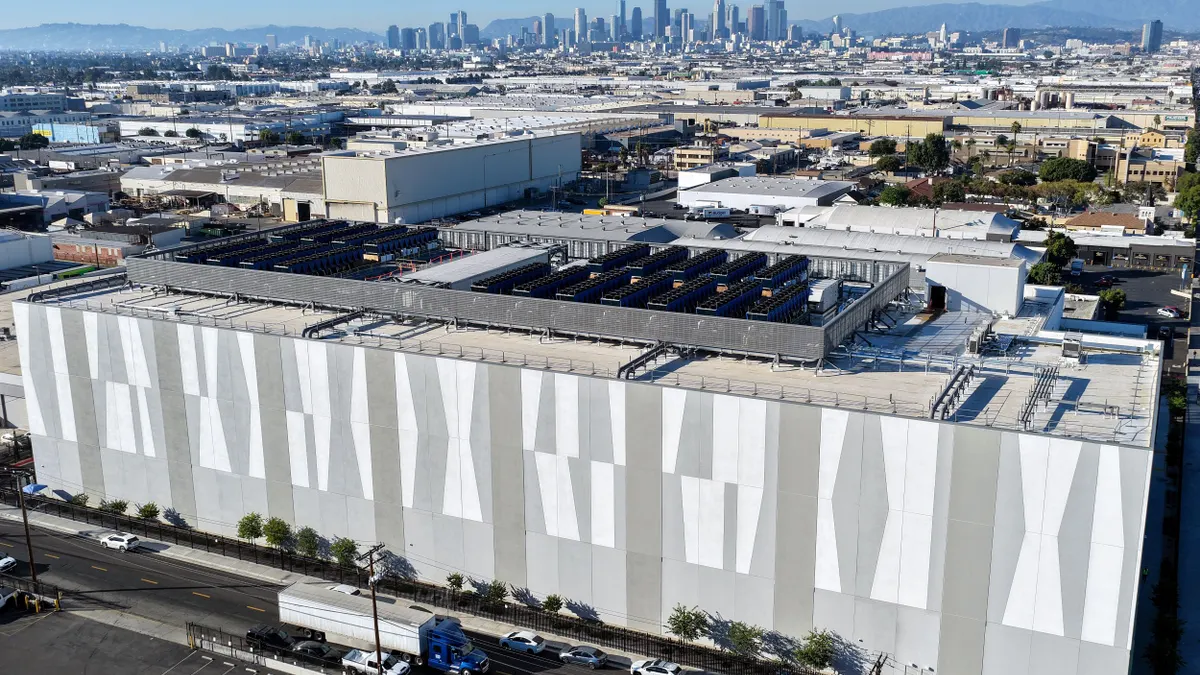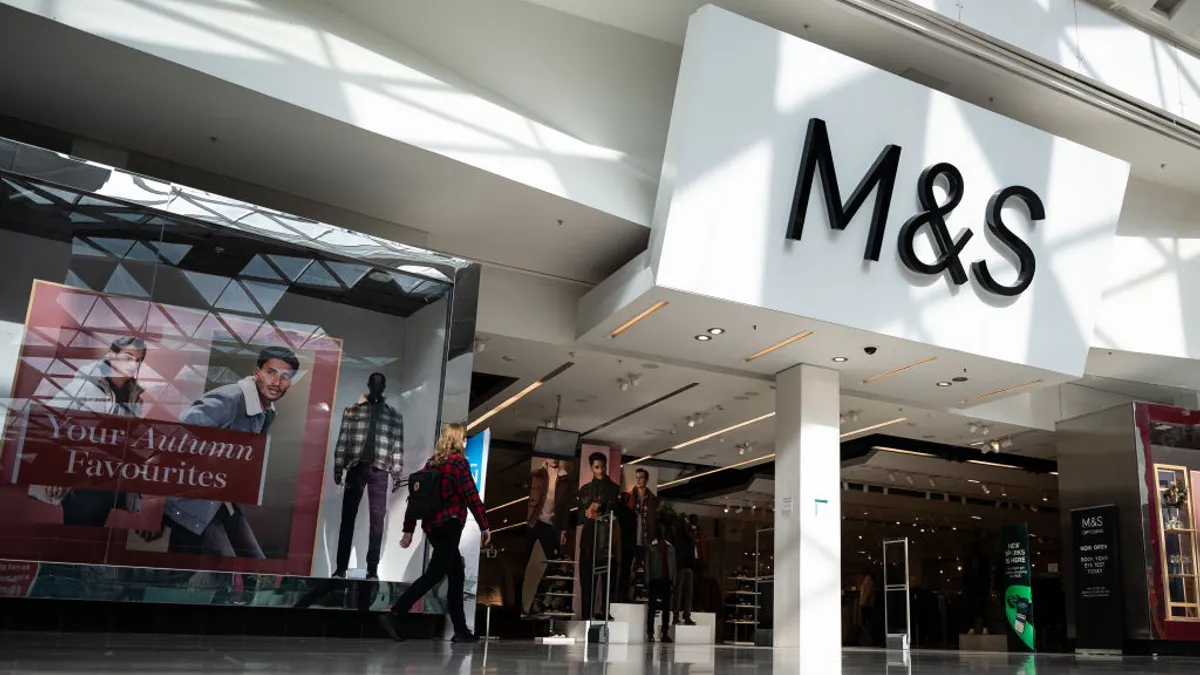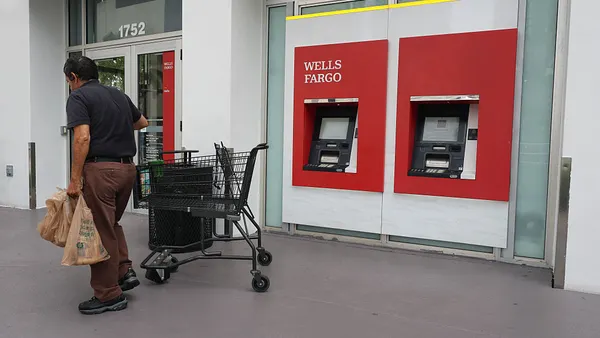JPMorgan Chase & Co. plans to replace its three-day in-office mandate for many of its workers with expanded rules that would require thousands of staff to return to the workplace five days a week, Bloomberg reported Tuesday. The move is the latest sign of the financial services sector’s efforts to ramp up return-to-office policies.
Following ambiguity in return-to-office policies in recent years, financial services firms have largely decided on workplace models and are working to balance priorities and improve workplace experience, according to experts at JLL.
Financial services firms are the most likely to increase head count in the next five years compared with all companies globally, Sarah Bouzarouata, director and research lead for financial services at JLL, said on a webinar Wednesday. Seventy percent of financial services firms JLL surveyed claimed workforce expansion as a top-three expectation, with 66% of firms in the sector also expecting to increase office utilization in their portfolios in that time.
“We're really going to see firms move towards the implementation and execution phase in 2025,” Bouzarouata said. “We're going to see a lot more stricter [return-to-office] policies, and we've already seen that among some of the larger firms. So I think [we’ll see] a lot of execution on workplace policies with firmer and stricter attendance mandates.”
JPMorgan — the largest U.S. bank — employs more than 300,000 people globally. It plans to support the move to more in-office work by building a 60-story skyscraper in midtown Manhattan that will house up to 14,000 workers. It will have amenities including yoga and cycling rooms, meditation spaces, and a state-of-the-art food hall, the firm said when it announced plans for the building in 2022.
JLL webinar participants said financial services firms increasingly see their offices as key to employee satisfaction and workforce needs. “In those spaces that are going to be corporate headquarters or key locations, we will continue to see the move towards these institutions wanting to own and manage their own assets to really create that centerpiece of … employee experience,” Mark Kreisman, global managing director of financial services at JLL, said in the webinar.
JPMorgan’s push for employees to be in the office full-time follows similar mandates from other Wall Street firms like Goldman Sachs — in part due to regulatory changes that have made it harder for financial institution employees to work from home. Others in the sector, however, like Citigroup, continue to maintain a three-day in-office policy for many staff.
“Banks are office-forward. Many of them are going five days a week. Some of them are staying hybrid, but [organizations have] figured that out,” Vijay Jesrani, managing director of financial services at JLL, said on the webinar.
As a result, and to attract talent in a “fiercely competitive market,” financial services leaders are investing in high-quality space design that addresses factors that can affect employee satisfaction, including acoustics, thermal comfort, air quality and access to natural light, Kreisman said.
Addressing these factors is going to be at the forefront for those in commercial real estate, Kreisman said. “We’re asking folks to come back, in many cases, five days a week to the office. Take more firms into that space, and that emphasis on experience from those employees is going to become more and more important.”
JPMorgan’s new headquarters will be New York City’s largest all-electric tower, the company said in a release. It will be powered by 100% renewable energy, with net-zero operational carbon emissions. The building will use “state-of-the-art building technology and systems,” including sensors and AI to respond to energy needs, triple-pane glazing on windows and automatic solar shades connected to HVAC systems and water storage and reuse systems that are expected to reduce water usage by over 40%, the firm said.
To provide a design focused on “health, wellness and hospitality,” JPMorgan said it is partnering with experts — including the director of Harvard University’s Healthy Buildings program and wellness expert Deepak Chopra — to improve experience for employees, clients and visitors, per the release. Building design features with wellness in mind include continuous monitoring of air quality, advanced HVAC filtration systems to clean outdoor air as it enters the building and outdoor terraces featuring natural green space, it said. The building will also feature more communal spaces, more space volume per person and flexible floor plates than enable easy layout and design changes.
Due in part to the financial services sector ramping up its return-to-office policies, and a steadily declining supply of top-tier office space, rents in New York City are increasing and tenant inducements are decreasing, according to JLL’s Q3 market report. “Trophy-class” assets increased asking rents 15.2% in that time, to an average of $144.30 per square foot. That’s in contrast with Class B assets, which have seen asking rents drop 5.9% since 2019, to $59.92 per square foot, Rhona Kisch and Ian Silver, two partners at Seward & Kissel, said in a research note in JD Supra Tuesday, citing JLL research.
Direct asking rents for Class A office space continue to increase in Manhattan, growing 3.4% since 2019, to $83.76 per square foot, according to the report. In the fourth quarter of 2024, New York’s office leasing market saw even further demand for high-end-spaces, with a record number of leases signed at over $100 per square foot. Overall asking rents slightly decreased due to “less desirable spaces remaining available,” JLL said in its New York Q4 office report, released Wednesday.
“The less time a tenant has before lease expiration, the more leverage the landlord has in negotiating a new lease or a renewal,” Kisch and Silver said in their research note. “Participants in the Trophy/Class A leasing market need to plan accordingly,” they said.





















